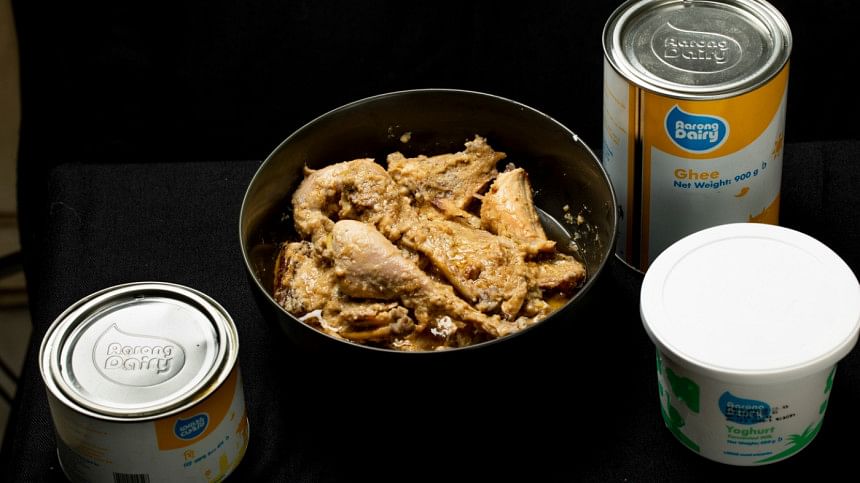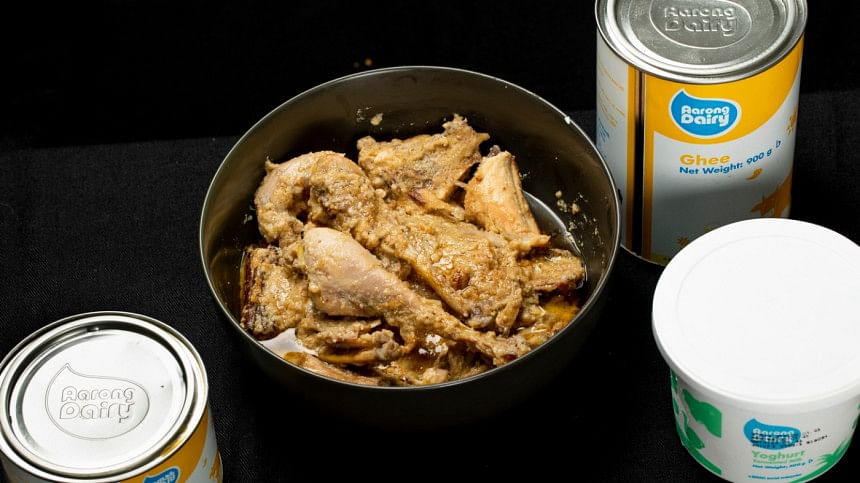Of kormas and yoghurt sauces

For those of us who are not into red meat, the coming Qurbani Eid spells out chicken korma in fine print. I know it is almost sacrilegious to cook chicken during this meat fest, but I firmly believe shahi chicken korma can stand its ground and compete with any beef or mutton specials you prepare, especially for the Eid day breakfast when you smother your paratha with the gravy — nothing can come between you and your korma.
This dish is for those who relish mildly spiced preparations. Perfected at the Mughal kitchen, it is still highly regarded as a celebration food. Spiced not for heat, but for flavour, you can marinate fish, vegetables, mutton and of course chicken in yoghurt and slow-cook to get the perfect korma curry sauce.
Tender chicken pieces bathed in yoghurt and white spices like garlic-ginger paste, onion with poppy seed paste, generous dollops of clarified butter or ghee, and a slight hint of cardamom and cinnamon; your everyday korma is done. The chicken rests on the gravy, which is separated lightly from the ghee; it tastes divine with pilaf rice or parathas.
For mutton or lamb, the technique is more or less the same as that for chicken, the only difference being the marinating time; the longer you keep the mutton or lamb marinated, the more tender it becomes. I refrigerate for at least 2 hours, but overnight works best.

Vegetable kormas are aromatic and equally delicious as meat. It is made with potatoes, peas, carrots, French beans, onions, tomatoes, coconut or yoghurt, nuts and spices. The trick is to parboil the vegetables and shower them in ice water to keep the firmness and colour intact. Sauté the onions, ginger-garlic paste, poppy seed paste, and add tomatoes to the mixed sautéed spices. Add in coconut milk or yoghurt and let it simmer for a while and then add the vegetables and cook till tender (be careful not to overcook the vegetables and make it go soggy).
Today, I am going to share a family recipe of chicken korma, the shahi style of course, as special occasions like Eid or birthday or marriage anniversaries call for richness in the korma.
But before I do that, I want to engage in a debate of what kind of chicken you would use. Many of us prefer the broiler or farmed chicken because of their soft meat, but I personally like free range chicken — I can chew on the bone without having to think what kind of nutrients went into the chicken feed! Moreover, the hardy free range chicken tastes better than their farmed cousins.

SHAHI CHICKEN KORMA
First and foremost let's give you the list of the ingredients required for shahi korma. It needs to be sorted out so that you don't miss out on anything; along with the regular list of acquiring the ginger, garlic, onions, poppy seeds, cardamom and cinnamon, it must be complemented with almonds, pistachio, unsalted cashew nuts, few generous twigs of saffron, black sultanas or golden raisins. The quantity of the ingredients given below.
Ingredients
1 whole free range chicken
2 tsp garlic-ginger paste
1 tsp coriander paste
2 tbsp full onion paste
2 tbsp poppy seed paste
1 tbsp cashew and almond paste
1 cup Aarong Dairy Yoghurt
Aarong Dairy Ghee, according to requirement
Salt, according to taste
Slivers of pistachio, almond
8 golden raisins/black sultanas
Saffron for colour
Method
The chicken, cut into regular pieces, must be mixed with Aarong Dairy Yoghurt, garlic-ginger paste, toasted coriander paste, onion and poppy seed paste; also add small amount of the cashew-almond paste. Aarong Dairy Ghee and salt are of course mandatory. Mix all these with the chicken and set aside for 30 minutes. Place your dish on the stove on low heat and let it simmer until tender.
Before taking it off the heat, add slivers of almond, pistachio, and sultanas. To give your shahi korma a shy hint of colour, add saffron to rosewater and gently sprinkle all over. The store-bought rosewater has a strong smell which children might not like so make your own rose water by adding rose petals to lukewarm water till fragrant. Serve hot with paratha or pilaf rice.
Tips
It is a lesser known fact that you can add coriander to the dish, which gives it a slightly sweet, lighter, and brighter flavour. The key is to toast the seeds, gently crush them to remove the husks. The inner-seed can then be turned into a paste for use.
Another point to remember while cooking korma is to add the sultanas few seconds before taking it out off the heat, otherwise the piquancy of the raisins might separate the yoghurt and give the dish an undesired look. After all, it is the aroma and appearance that goes hand in hand with taste for any food.
Food and Styling: RBR

 For all latest news, follow The Daily Star's Google News channel.
For all latest news, follow The Daily Star's Google News channel. 








Comments